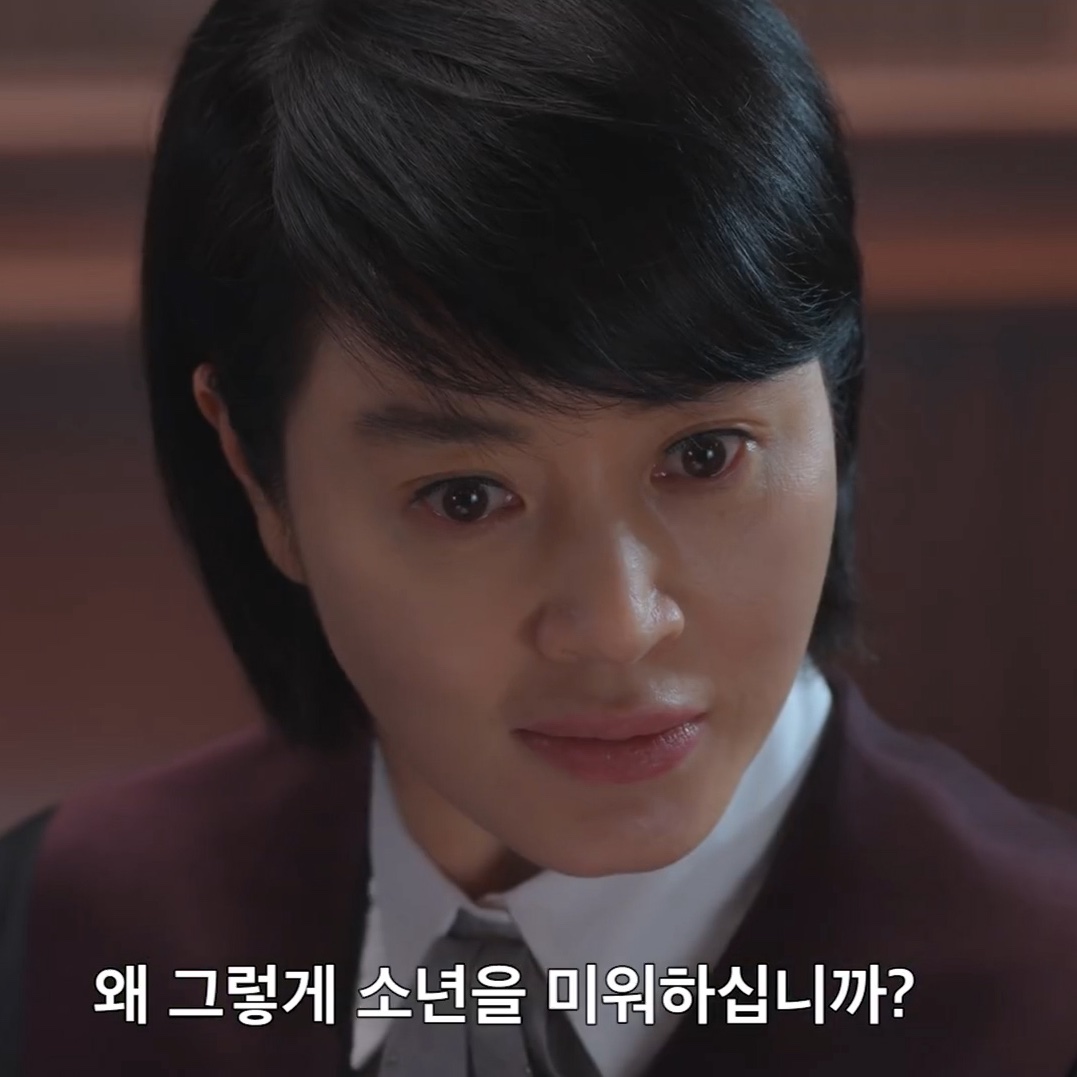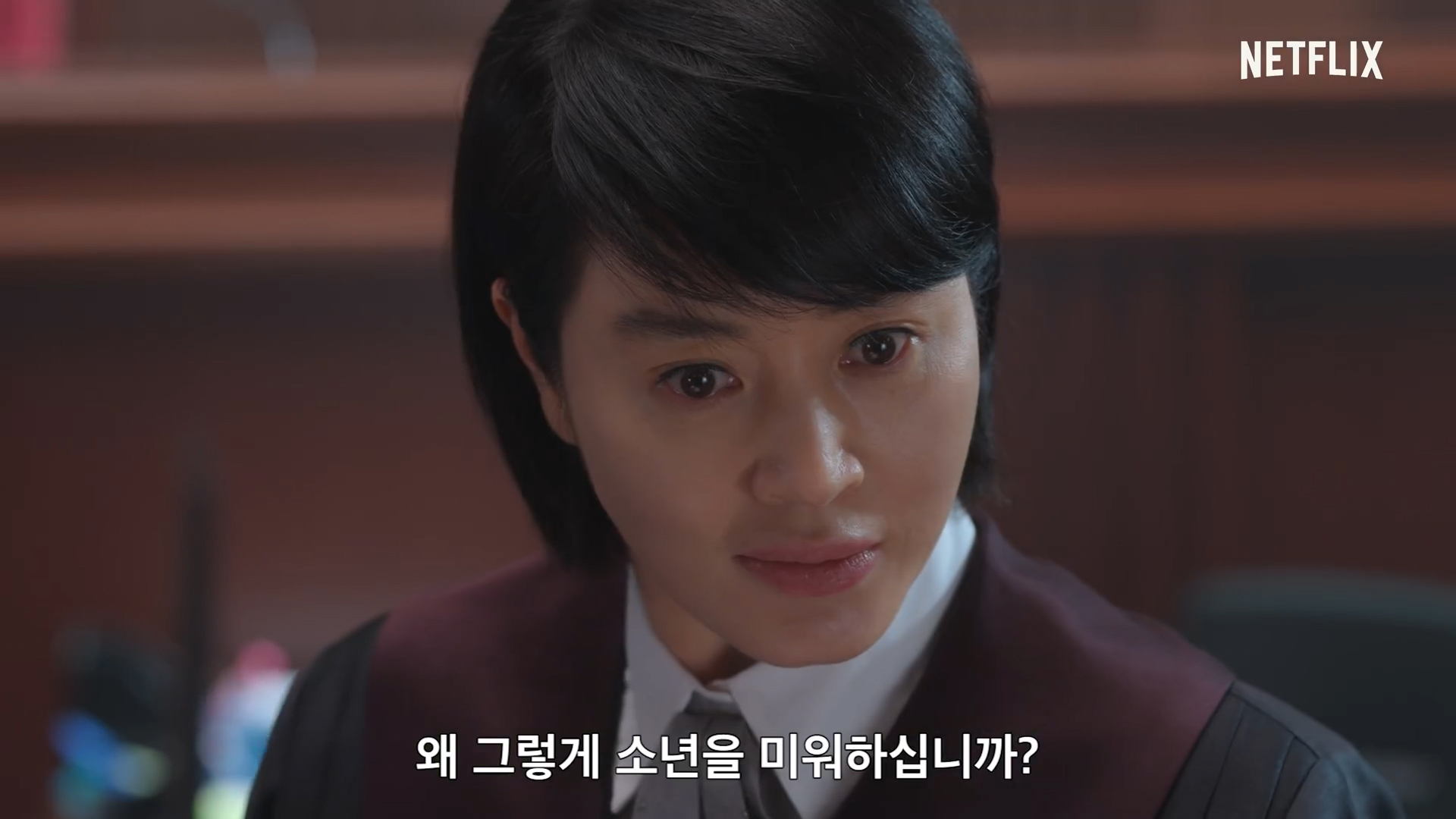
On February 20, 11 young offenders at a juvenile detention center in Seoul made off in the night after setting off the fire alarm to disable the automatic lock systems in place. Seven of them returned the following day and two more were arrested four days later after they were caught robbing and damaging property at an automated ice cream shop; the remaining two were arrested within the week. One month later, The Kukmin Daily reported on the incident in an article titled, “Like watching a crime movie: 11 young offenders escape in Seoul.” On a portal site where the article was posted, the most liked comments were, “Abolishing the Juvenile Act is the only answer,” and, “It’s frustrating that people think these criminals will be reformed. They’ll only grow up to be more ruthless criminals.” The next most liked comment read, “I despise young offenders.” It was a line originally spoken by Sim Eun-seok (portrayed by Kim Hye-soo), the main character in the Netflix series Juvenile Justice.
Sim becomes a judge for a juvenile court because she detests young offenders ever since losing her own child to pranks pulled by elementary students who went unpunished—criminal minors at least 10 years old but under 14 who, by law, were exempt from criminal punishment and subject only to protective detention for up to two years. Meanwhile, Judge Cha Tae-ju (Kim Moo-yeol), who was a young offender growing up in a domestically abusive environment himself, is committed to supporting young criminals who find themselves in situations similar to what he experienced. Their superior, the senior Judge Kang Won-jung (Lee Sung-min), appears to only be interested in pursuing his political ambitions, but in fact is actually a strong-willed individual, working to solve the problems related to juvenile crime that persist within the judicial system. His successor, Na Geun-hee (Lee Jung-eun), chooses a policy of bureaucratic control in the pursuit of efficiency in the overburdened Juvenile Criminal Collegiate Division, but later sees the shortcomings of her approach and reexamines her efforts. Juvenile Justice explores several cases of juvenile crime from the perspectives of four judges with differing beliefs, with a special focus on Sim and the trauma inflicted upon her by young offenders. Once openly hostile toward young offenders, Sim throws herself into an extensive investigation falling outside her duties as a judge to uncover the absolute truth behind one of her assigned cases, reaffirming her position at the end of the series: “I despise young offenders. … Though I despise young offenders, I have no ill will towards them. I’ll be sincere when I deal with their cases. Though I despise them, I’ll make decisions with a cool head. Though I despise them, I won’t look at them with any bias.”
Overall, the central purpose of Juvenile Justice is to question society’s role in juvenile delinquency. “It’s true that every teenager is affected by their family and their surroundings—but whether or not they commit a crime, is still a matter of choice,” Sim says sternly in the courtroom, while also adding, “Children do not grow up alone.” While society’s views toward juvenile offenders are closer to what Sim first says, her latter point is meant to place responsibility not only on young offenders’ guardians but on all of us. It seems there is a slight gap between what the show is trying to say and the impression it has imparted, however. Both the murder at the hands of an elementary school student and the case with a brick as the murder weapon handled at the beginning and end of Juvenile Justice are revolve around offenders too young to be charged. The show was influenced by these real-life incidents, which took place within just the past few years and sparked controversy over the Juvenile Act and whether or not it should be abolished. The premise of the TV series is that the brick-throwing murderers were never reformed and, consequently, have grown up into monsters, committing sexual assaults at a mass scale and distributing illegal sex tapes. One currently practicing judge has indicated that the majority of real juvenile crimes are cases involving matters of life and death and that the violence is neither more forceful nor crueler than it was the past (Cheon Jong-ho, On the Youth I’ve Met), and Kang echoes the idea in Juvenile Justice, saying, “Children’s crimes are being portrayed violently all over the media. At this point, edification is the focus!” Yet the series faces a dilemma in that it chose to highlight those rare cases of violent crimes and portrayed it to a receptive public through its use of intense narrative.
There was another attention-grabbing comment left on the article covering the juvenile detention center breakout: “‘This is the reason I so despise you all. Kids like you never change.’ Seriously, these lines from Juvenile Justice apply perfectly here. Hah!” The commenter was quoting what Sim says early in the series when she reprimands the girl who steals someone’s wallet at a dinner between the judges and the young offenders after serving all their time. The problem is that, while Sim’s experiences ultimately lead her to change, it is only the things she says out of hate toward the young offenders that have been picked up by viewers and used as “cathartic” memes, reenforcing existing biases. The escape described in the article as akin to “a crime movie” was handled in Juvenile Justice as well. Several young people living in a foster care center run away after a conflict, despite the efforts of the center’s dedicated manager, O Seon-ja (Yeom Hye-ran). With no money and nowhere to go, they soon fall into a life of crime. In Sim’s words, “Juvenile crimes aren’t just committed. They permeate.” The vast majority of young offenders are made that way in an environment where domestic violence, child abuse and juvenile delinquency are intrinsically linked. “Naturally there are cases where the youths themselves neglect to make an effort,” Sim Jaegwang, who formerly oversaw juvenile cases at Seoul Family Court, writes in his book, Juvenile Court Cases, “but, more often, they are unable to surmount the difficulties presented by their environments through their determination alone. No matter how much the child changes, he will come to the same miserable outcome repeatedly if the environment to which the youth returns does not change.” A child’s life, in other words, is in no way a genre piece.
Author Seo Hyeonsook wrote Reading Youth about her experience spending a year teaching Korean literature in a juvenile detention center. “If you could take a child who has committed a crime and lock them away forever, you could just lock them up and be done with it,” she says in her book. “All you would have to do is make them pay for their crimes by putting them away. But they will soon stand next to us—as our neighbor, as a member of society and, above all else, as someone with a soul. That is the reason we must think about something ‘beyond’ paying for the crime.” It would be easy enough to call them hopeless and lock them away forever. But we cannot do that, and so the responsibility falls on everyone to imagine something beyond that and put it into practice. Juvenile Justice creator Hong Jong-cha
n said that, if he were to make a second season of the show, he would “want to depict the young offenders’ environments, the situations they face, and the social system that continues to produce new offenders, from the perspective of the young offenders themselves.” Those are likely just the kind of stories we need to hear now.
Unauthorized reproduction and distribution prohibited.
